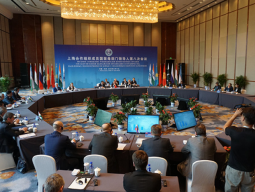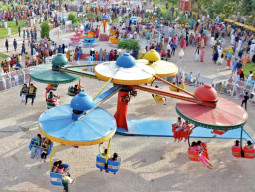
Let’s try to understand the psychology of terrorists for pursuing targeted killings of law enforcers.
In Balochistan, five main streams of terror exist. First, there is militancy fuelled by local aggrieved sardars in the form of different groups such as the Balochistan Republican Army and the Balochistan Liberation Army. Second, there is the insurgency led by Allah Nazar which primarily comprises commoners of the Baloch area. Third, an explosive mix of sectarian outfits is also operating in the province, including the Lashkar-e-Jhangvi, the Jaish-e-Adl, the Jaish-e-Islam, etc. Four, many offshoots of main militant groups are also fighting alongside other terror assemblage for parochial gains. These include the Baloch Liberation United Front, the Lashkar-e-Balochistan and the United Baloch Army, which focus on Quetta and its peripheral area. Lastly, some residuals of the TTP and Jandullah are also very much functional in Balochistan. There are two important characteristics of all these groups. They cooperate and compete with one another in task execution and area control. They also change their loyalties based on monetary gains and financial benefits. The recent terror incident in Mastung is a classic example of such collaboration. All these groups have been involved in targeting law enforces for multiple reasons which overlap with their strategic objectives.
First, they want to instill fear in the hearts of law enforcers so that more space is available to them for their operational and logistical needs. In 2016, as many as 125 police personnel were killed and 203 injured in incidents of violence in which 331 civilians lost their lives. Last year, the number dropped significantly but then it resurged in the current year. As a result of these attacks the constabulary recruitment level has dipped, which has aggravated the situation for law enforcers in the province. As the jurisdictional command of paramilitary forces shrinks, these militant groups are stepping up their terror activities to further degrade the morale of law enforcers. Second, these groups have been gaining support from across the border and have tapped into the existing Afghan population residing in different parts of the province. It is highly likely that different groups work on the same project to reap its benefits collectively. Third, they are also singling out the soft targets like Hazaras and Christians so that the latter stage demonstrations in the provincial capital, thus further stretching the law enforcers with additional pressure. Fourth, in order to drive a wedge between Pakistan and China, these groups have been actively monitoring the Chinese movement in the province to target them at opportune moment. They also want to ensure that the ongoing development projects in the province should fail to bring any solace to the locals. Their ultimate goal is to instigate the local population and discourage the people of other provinces to come to Balochistan and work in various fields and projects for provincial betterment. A number of non-kinetic means have also been used by disgruntled Balochi sardars living in European countries to pressure the state of Pakistan.
In North Waziristan, the situation is deteriorating with targeted killings of local tribesmen. The latter are already agitating against such incidents and have staged sit-ins and demonstrations blaming the local administration for what they claim their lackadaisical attitude and inaction. Since the local tribes have been disarmed, they are unable to protect themselves against any outside assailants. The situation requires that selective arming of tribesmen be made so that they can patrol the area conjointly with local administration for protection and safety of native population. Moreover, after the recent merger of the erstwhile Fata with K-P, the choice of civil servants to be posted as local administrators should be made deftly so that the latter is in a position to lead the locals properly and establish well-intentioned relationship with significant tribal elders. The border fencing can retard the physical attacks from Afghanistan but it cannot offset non-kinetic assaults from e-chatting groups and other communication software. The terrorists want to instigate the locals to stage violent demos against the paramilitary forces so that it can be further pressured to give more space for terror actions. The continuous return of displaced persons due to military operation is also a sore point which requires proper attention and monitoring. The recent killings in Dera Ismail Khan are also a reminder of terror localisation in the area. This has further led to politicisation of terror on account of personal enmities and rivalries.
The terror operators present in Balochistan, K-P and elsewhere have a common psychology and that is to break the will of law enforcers operating in these areas. One must therefore keep the spirits of policemen,Llevies, politicos and local administrators high to allow minimum physical and psychological space to the terrorists.
Published in The Express Tribune, August 14th, 2018.
Like Opinion & Editorial on Facebook, follow @ETOpEd on Twitter to receive all updates on all our daily pieces.



























1714024018-0/ModiLara-(1)1714024018-0-270x192.webp)










COMMENTS
Comments are moderated and generally will be posted if they are on-topic and not abusive.
For more information, please see our Comments FAQ